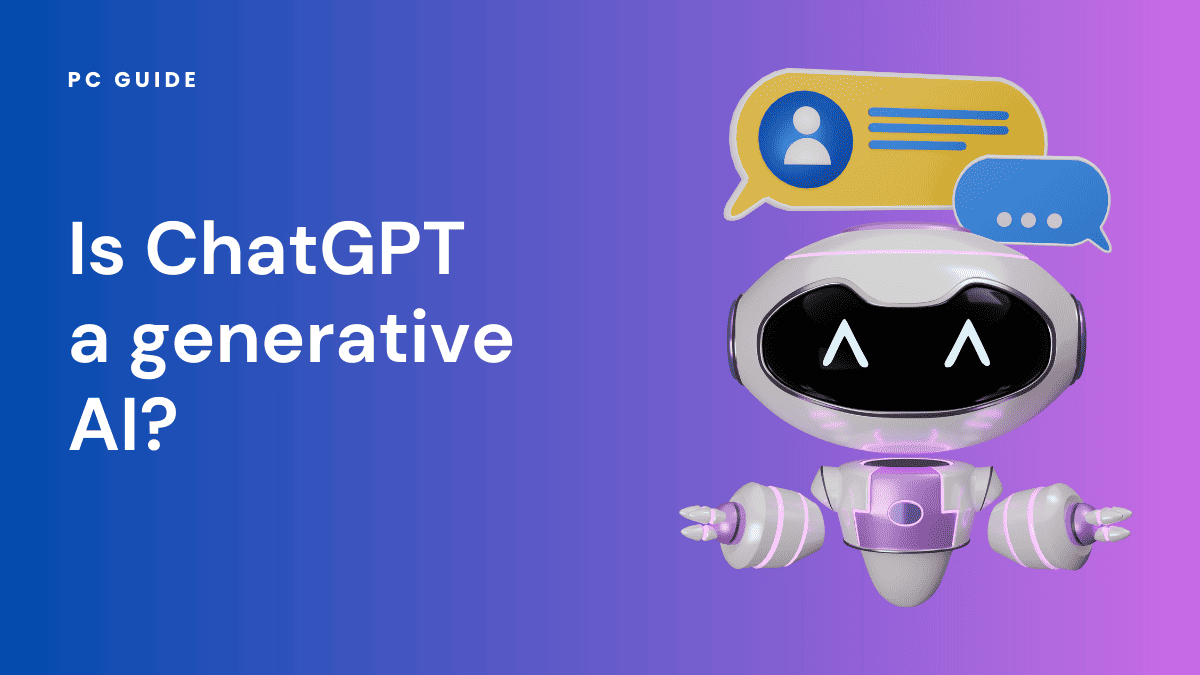Is ChatGPT a generative AI?

Table of Contents
The use of Artificial Intelligence (AI) has increased across all industries since its advent. However, one groundbreaking innovation that has recently captured everyone's attention is generative AI. Generative AI is algorithms that generate new content by learning patterns to input and training data. One such solution that allows you to create exceptional content is ChatGPT. So, does that means ChatGPT is a generative AI? Or is there something else to it?
Understanding generative AI: A comprehensive look
Generative AI refers to a class of artificial intelligence models, including chatbots, that can produce original content such as text, images, music, or even entire conversations. Unlike simple copying, generative AI models learn patterns, styles, and structures from large datasets, including internet sources.
Prime Day is finally here! Find all the biggest tech and PC deals below.
- Sapphire 11348-03-20G Pulse AMD Radeon™ RX 9070 XT Was $779 Now $739
- AMD Ryzen 7 7800X3D 8-Core, 16-Thread Desktop Processor Was $449 Now $341
- ASUS RTX™ 5060 OC Edition Graphics Card Was $379 Now $339
- LG 77-Inch Class OLED evo AI 4K C5 Series Smart TV Was $3,696 Now $2,796
- Intel® Core™ i7-14700K New Gaming Desktop Was $320.99 Now $274
- Lexar 2TB NM1090 w/HeatSink SSD PCIe Gen5x4 NVMe M.2 Was $281.97 Now $214.98
- Apple Watch Series 10 GPS + Cellular 42mm case Smartwatch Was $499.99 Now $379.99
- ASUS ROG Strix G16 (2025) 16" FHD, RTX 5060 gaming laptop Was $1,499.99 Now $1,274.99
- Apple iPad mini (A17 Pro): Apple Intelligence Was $499.99 Now $379.99
*Prices and savings subject to change. Click through to get the current prices.
Techniques behind generative AI
Generative AI systems leverage machine learning techniques like deep learning, neural networks, reinforcement learning, and probabilistic modeling. These capabilities enable the generation of content that mimics human creativity, understanding language nuances, grammar rules, and semantic contexts.
Is ChatGPT a Generative AI? Exploring the large language model
Yes, ChatGPT is a generative AI model, part of the GPT models developed by OpenAI. Built upon the Generative Pretrained Transformer (GPT) architecture, it’s a fine-tuned system that comprehends natural language input and generates coherent responses.
Training and capabilities of ChatGPT
ChatGPT is trained across varied datasets, including text, ebooks, images, etc. By leveraging these sources, it has honed its language skills, engaging users in meaningful conversations. Its capabilities extend to content creation, customer support, language translation, and more.
ChatGPT Plus and additional features
OpenAI's ChatGPT plugins, such as ChatGPT Plus, allow it to perform additional tasks. For instance, it can analyze images and provide insights even from unstructured data with the Code Interpreter. Its generated text can be used for social media posts, labs, and other applications.
Collaboration and subscription models
With collaboration from Microsoft and under the leadership of Sam Altman, ChatGPT offers various subscription models. It’s a generative artificial intelligence tool that’s constantly evolving, with GPT-4 being one of the latest iterations in the series.
Human feedback and fine-tuning
Human feedback plays a crucial role in fine-tuning ChatGPT. By understanding and responding to prompts and keywords, it’s becoming an increasingly sophisticated AI chatbot, capable of generating content that’s contextually relevant and coherent.
Conclusion
Is ChatGPT a generative AI? The answer is unequivocally yes. ChatGPT’s status as a generative AI is clear, with its wide-ranging applications, continuous advancements, and remarkable ability to generate human-like text. As an llm (large language model), it adapts to various tasks, making it a vital tool in the field of artificial intelligence.
In the grand tapestry of AI advancements, generative AI, including models like OpenAI's GPT-3, is a true marvel. It showcases the potential for machines to exhibit creativity, pre-training on massive parameters, and produce content that closely mimics human thought processes. With its natural language processing (NLP) capabilities, ChatGPT is a prominent example of generative AI in action. Its ability to generate coherent and contextually relevant text, even in chat applications and search engines, sets a new standard for AI innovation.
FAQs
What are some other examples of generative AI?
Google Bard, DALL-E, Midjourney, and Hugging Face are other examples of generative AI.
Was ChatGPT the first generative AI?
No, ChatGPT was not the first generative AI. However, it can be called the first “mass” generative AI application, as it accelerated the adoption of generative AI.
